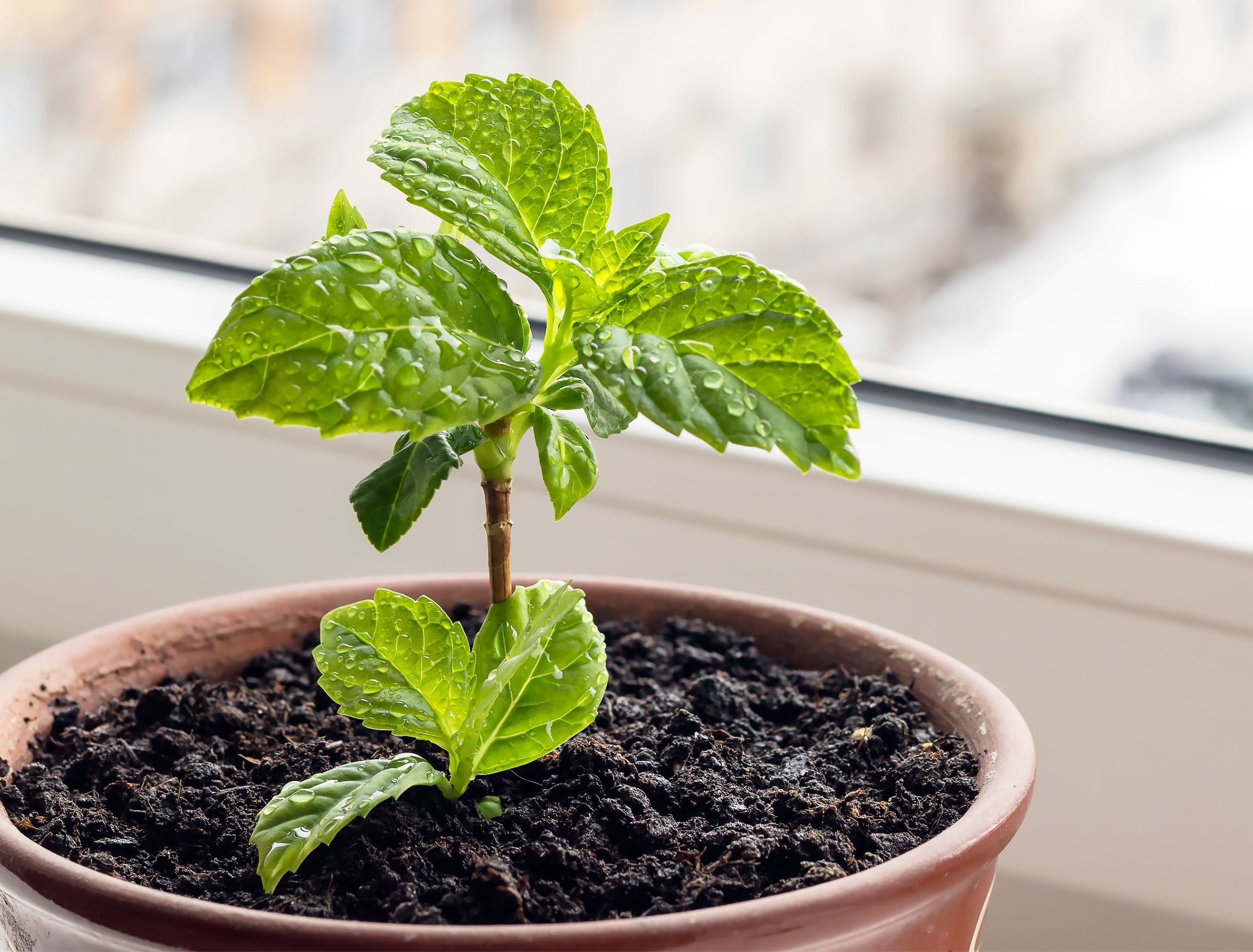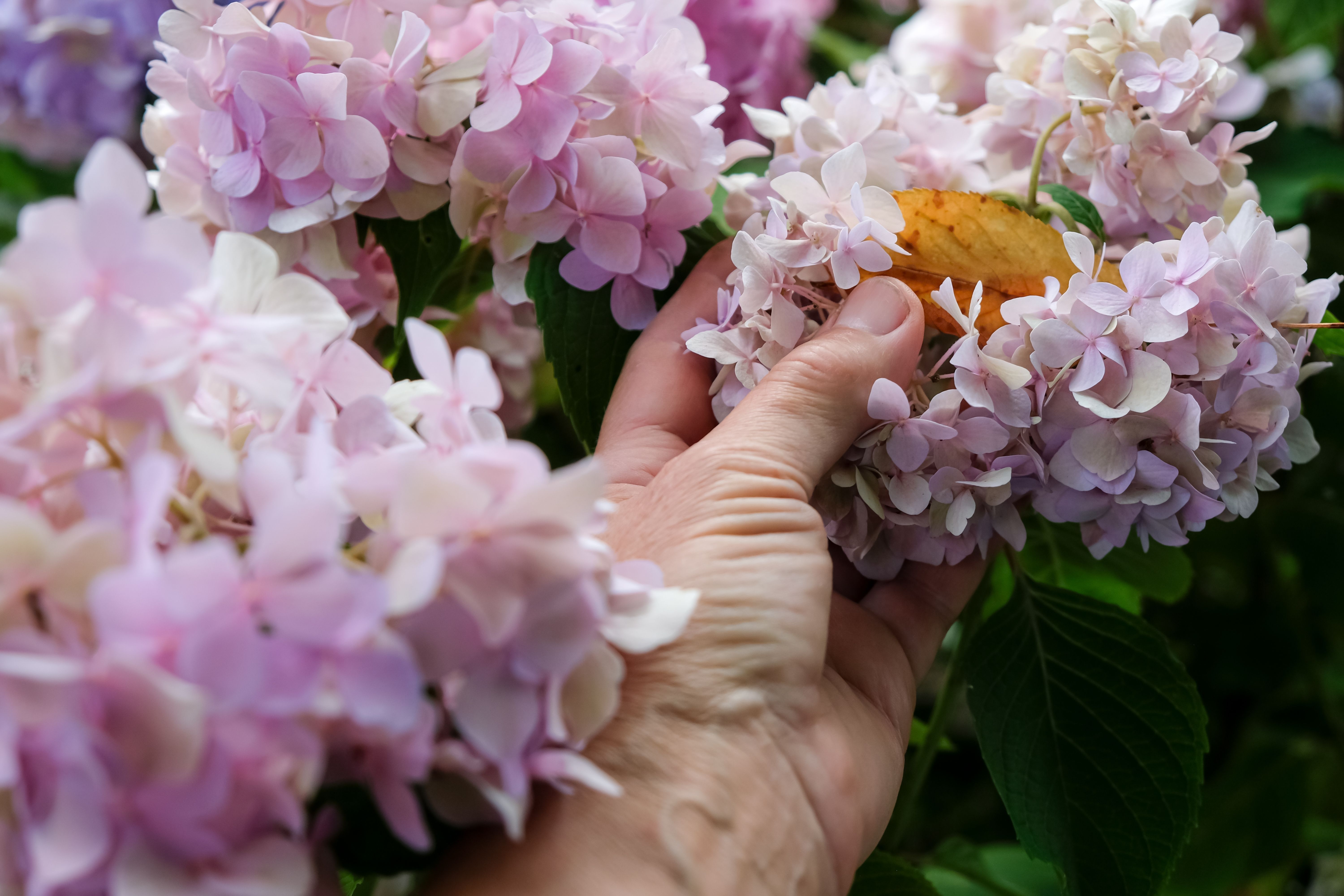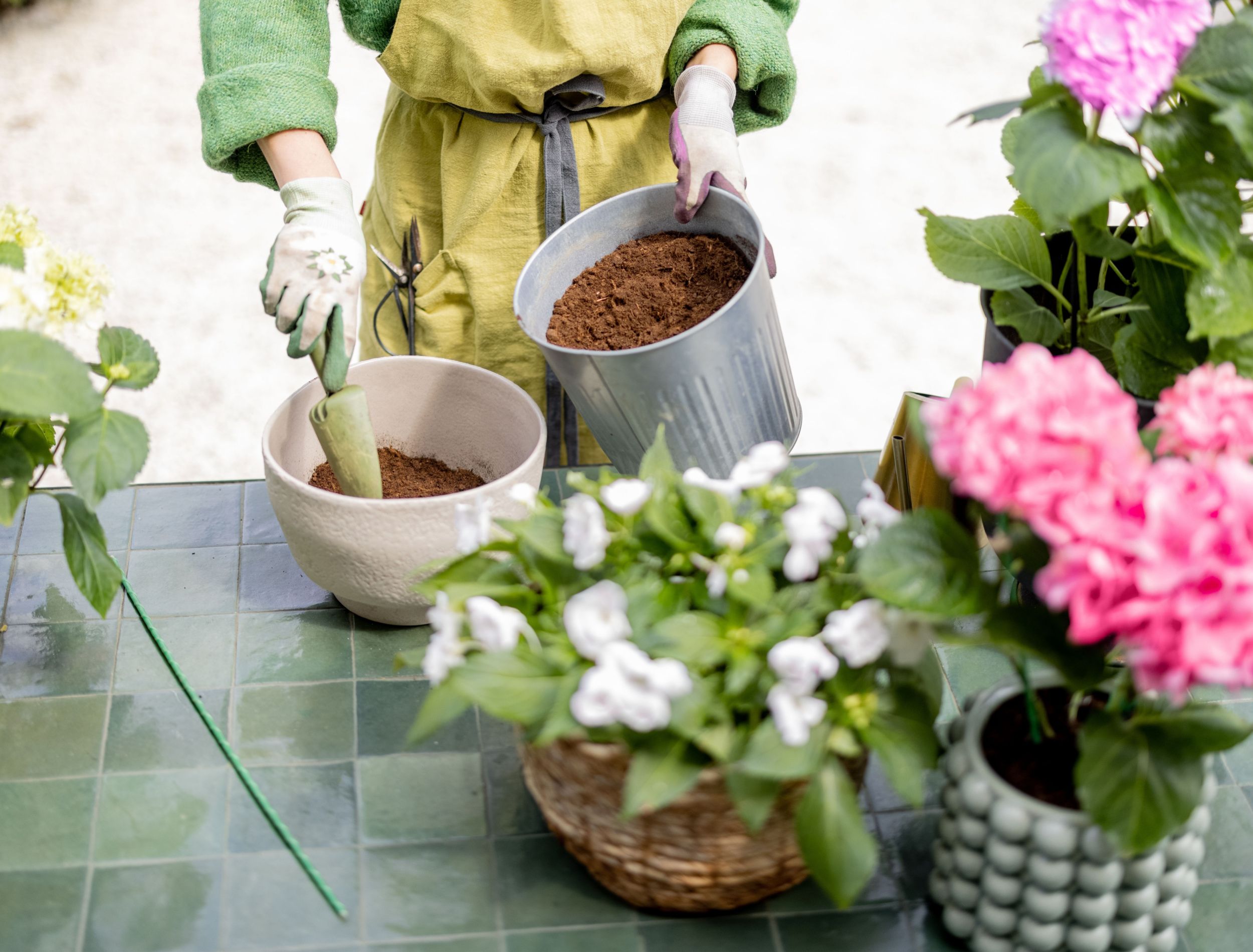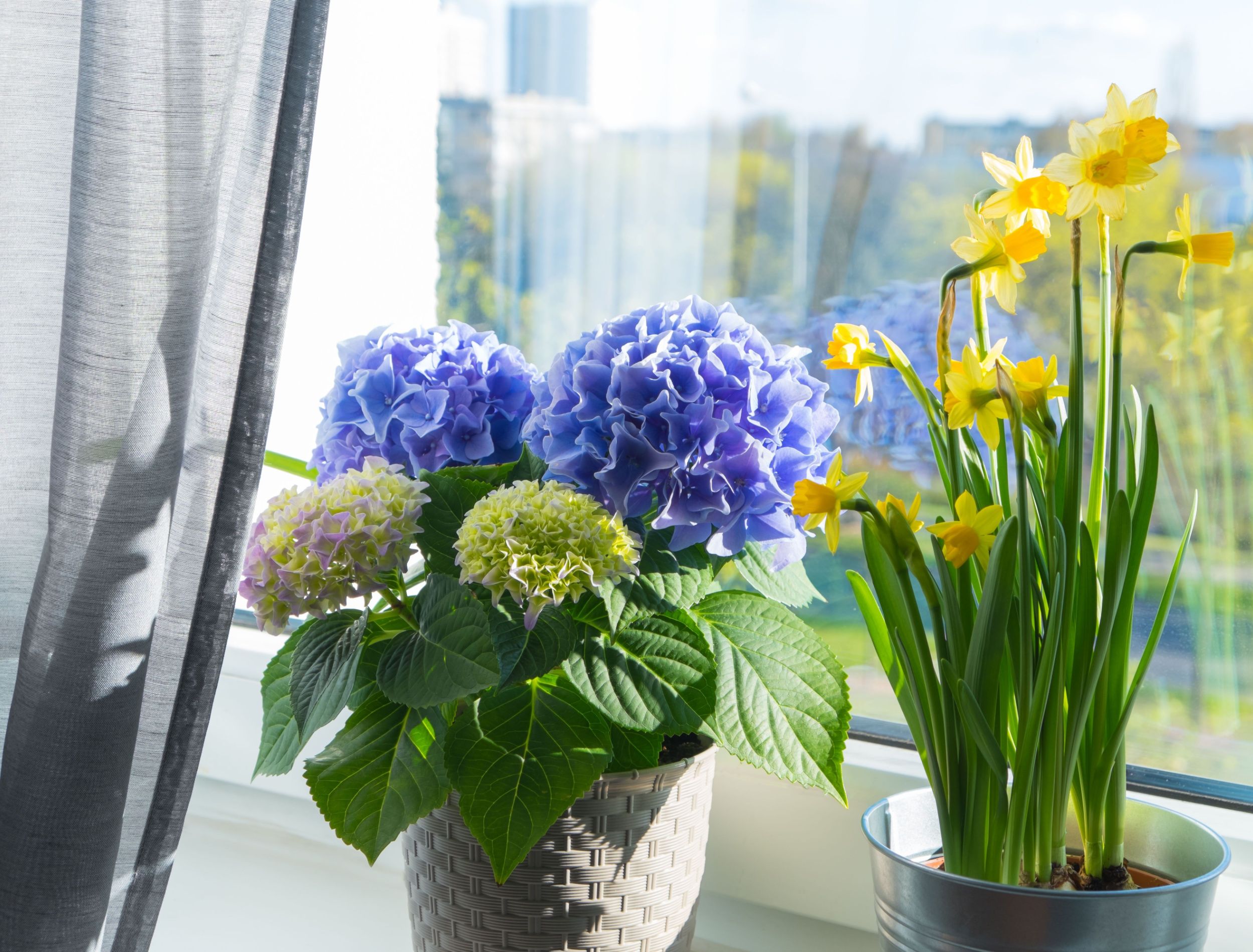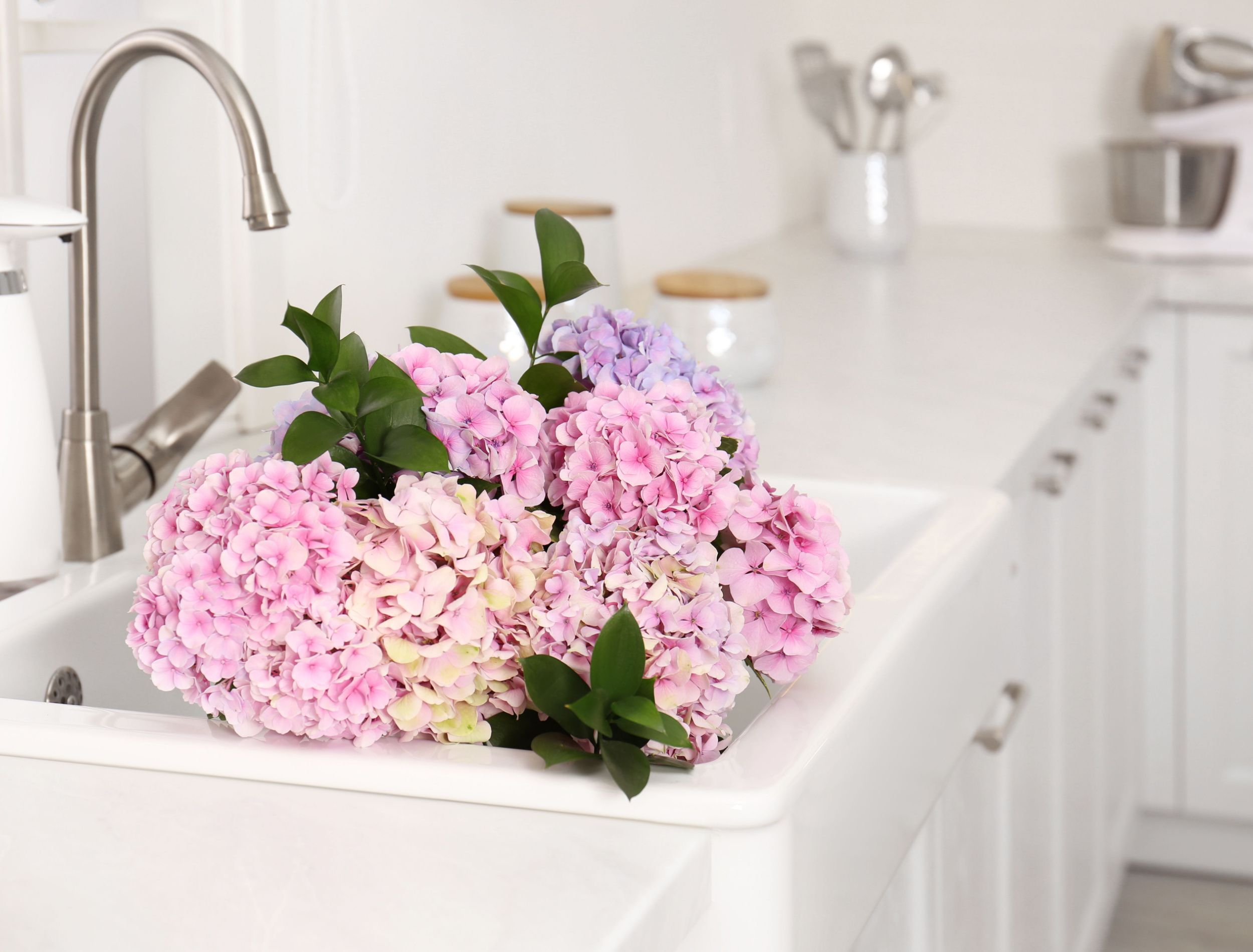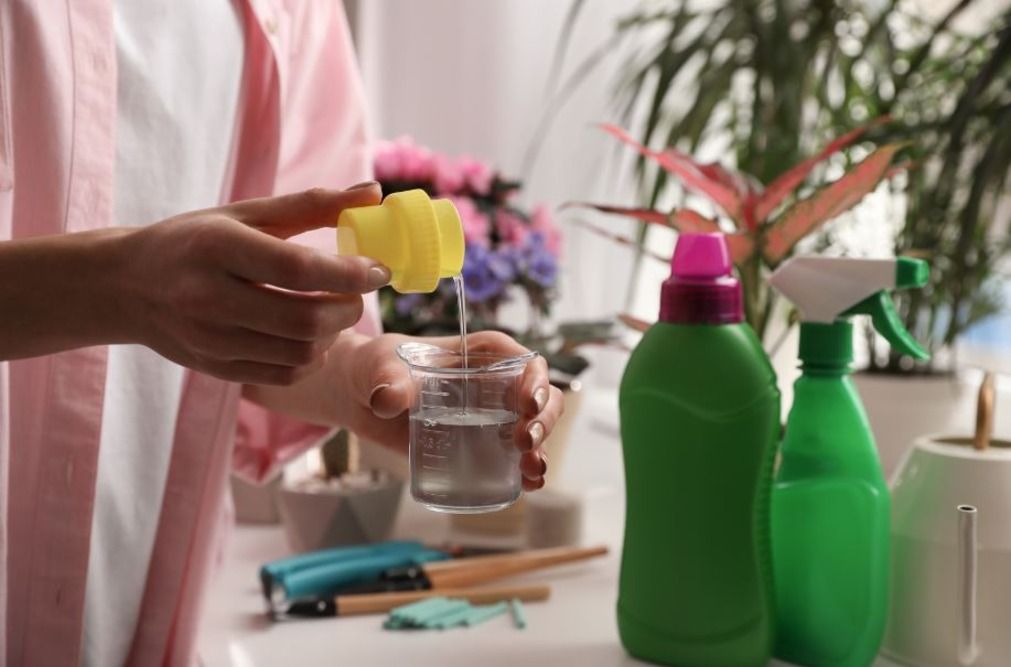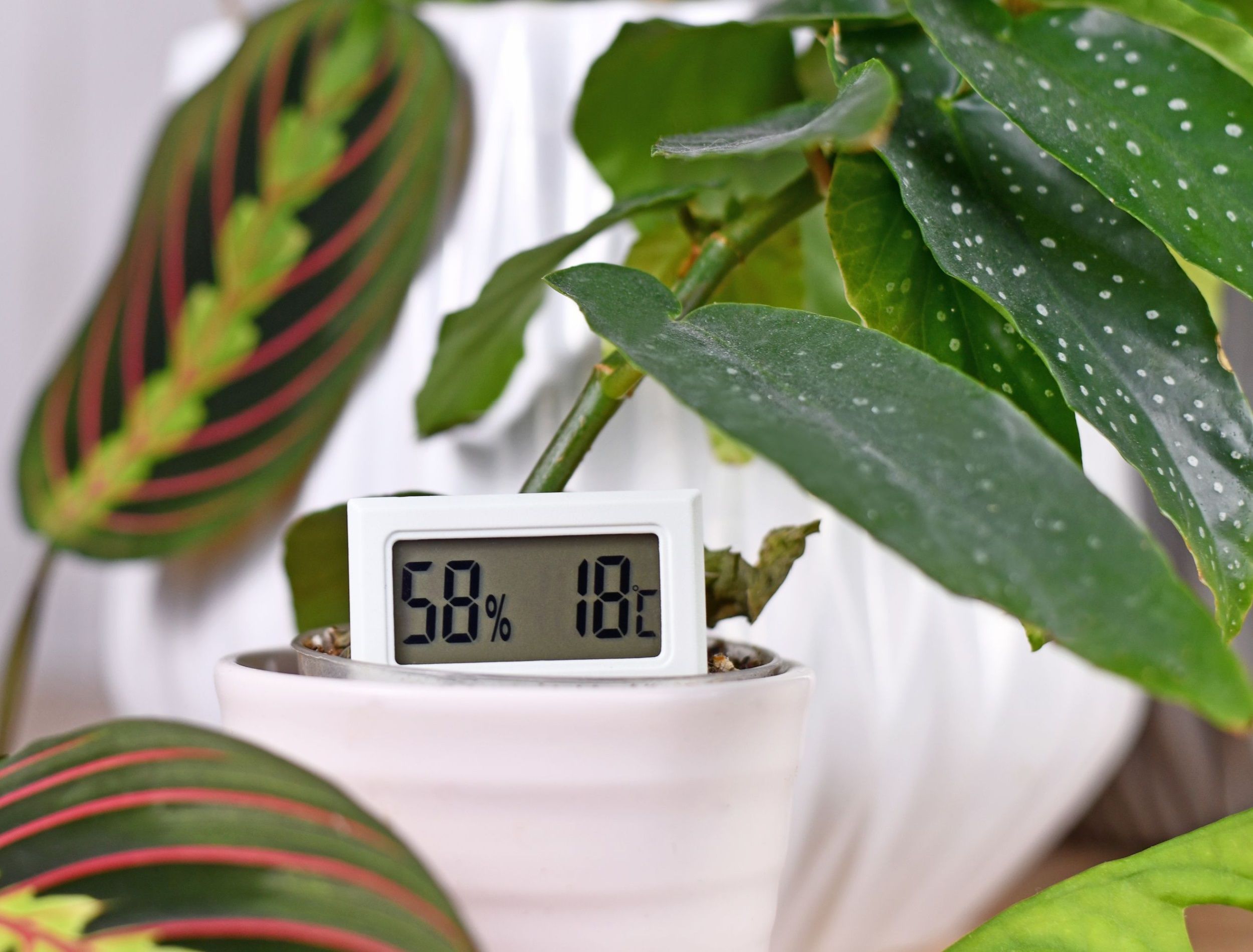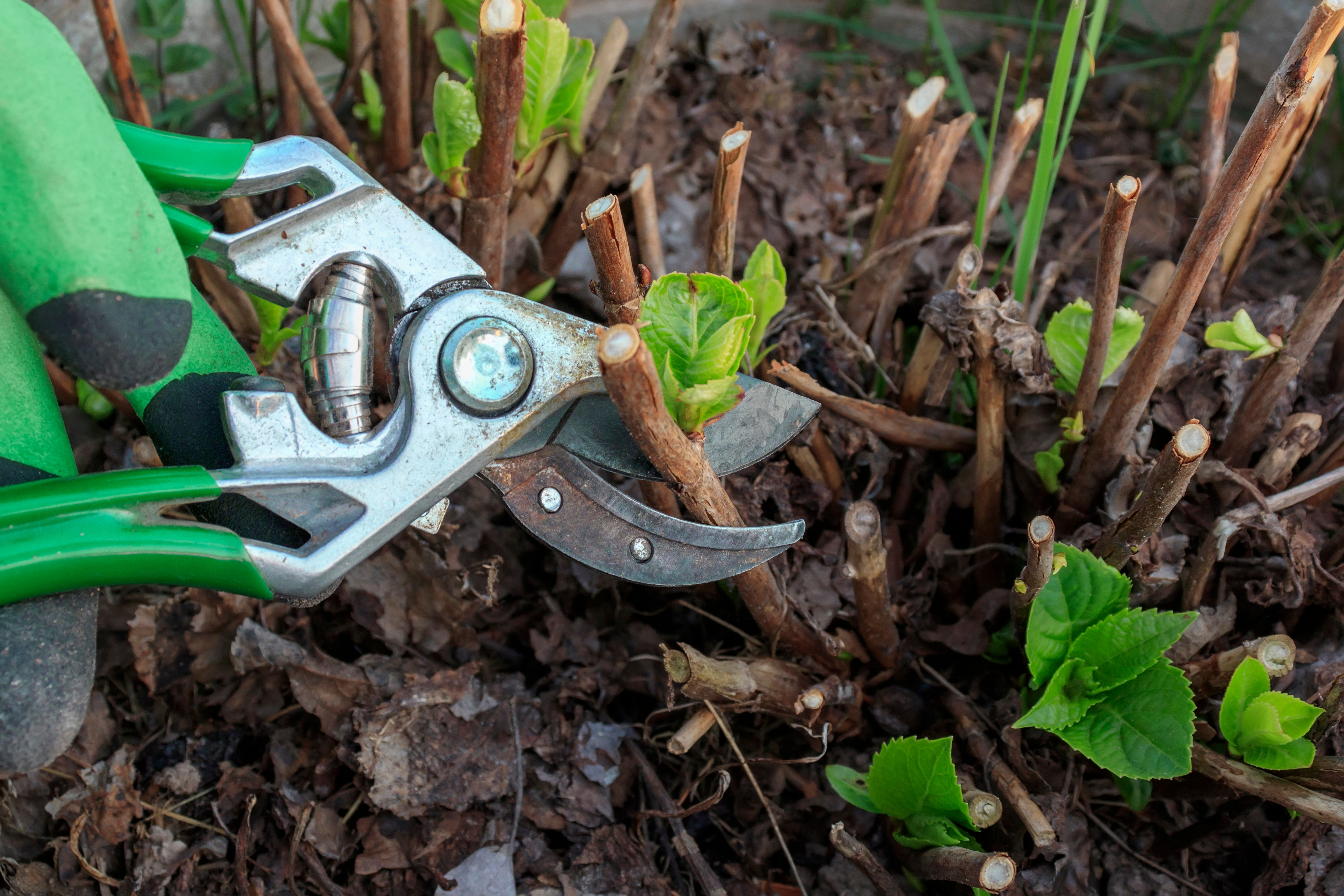Hydrangeas are a popular garden plant for good reason, boasting show-stopping globe-like flower clusters that are lovely in dried bouquets and container gardens, but they can even thrive indoors. Instead of purchasing a hydrangea plant for a special occasion and tossing it once the blooms wilt away, learn how you can properly care for the plants and enjoy their stunning flowers for years to come.
Discover the tools you'll need, the best varieties for growing indoors, how to repot hydrangeas, and provide proper lighting, watering, fertilizing, and more.
Tools You'll Need
All the essentials for growing hydrangeas indoors
Before you can grow hydrangeas indoors, there are a few tools you'll need.
- Hydrangea plant
- Well-draining soil
- Humic acid
-
Coir or vermiculite
- Coarse sand, charcoal, or perlite (optional/alternative)
- Large container
- Morning sun
- Wood chips or shredded bark
- Balanced liquid fertilizer
- Pruning shears
- Watering can
Choose a Variety
Find a variety that suits your space
The first step in growing hydrangeas indoors is choosing a variety. Generally, dwarf varieties are ideal for growing indoors as they don't take up as much room, surviving in smaller containers and locations.
- Hydrangea paniculata 'Limelight': reaches 6 to 8 feet in height with light-chartreuse blooms.
- Hydrangea quercifolia 'Little Honey': reaches 3 to 4 feet in height with white flower clusters.
- Hydrangea quercifolia 'Pee Wee': reaches 3 to 4 feet in height with showy ivory flowers.
Potting Media and Repotting
Pot in rich, loamy soil
Whether you have selected a hydrangea from a garden center or a grocery store, repotting is a good idea to ensure that the plants are in the proper growing media.
Hydrangeas prefer rich and loamy soil. Create your own hydrangea potting media with a mixture of well-draining soil, humic acid, and coir or vermiculite. If you don't have those materials on hand, coarse sand, charcoal, or perlite are also ideal for creating an airy mix.
- Select a new pot, about 2 to 4 inches larger than the plant's current pot, with a drainage hole. Drainage is essential to ensure the plants do not suffer from overwatering.
- Start by filling the bottom of the container with a mixture of well-draining soil.
- Add coir or vermiculite to loosen up the soil.
- Then, unwind the roots of the hydrangea and plant them in the pot.
- Fill the container with more soil and coir or vermiculite and gently pat down around the roots.
Lighting
Provide ample morning sun
While hydrangeas require plenty of light to continue blooming.
- They thrive in morning sun and dappled afternoon shade.
- Keep the plant near a south-facing window where they receive four hours of indirect sun per day.
- Remember that with more light, hydrangeas may require more frequent watering.
Watering
Water daily while in bloom, allow soil to dry out when dormant
Keep potted hydrangeas moist at all times while the flowers are in bloom. Otherwise, the flowers may dry out and drop, halting the plant's blooming. As a general rule of thumb:
- Water your hydrangeas three times a week
- When the top 3 inches of soil dry out, water again.
- Ensure you are thoroughly watering the plant by allowing water to run out of the drainage hole.
Remember that overwatering can have a negative impact as well, so avoid soggy soil. Signs of overwatering include:
- Browning or yellowing foliage.
- Leaf drop.
- Soggy soil or mold on the soil surface.
Add 2 to 3 inches of wood chips or shredded bark on top of the soil as a form of mulch to maintain moisture levels.
Fertilizer
Fertilize in spring
Feed the hydrangea with a balanced liquid fertilizer in spring and a second time when the plant begins flowering (late winter and early spring). The fertilizer will stimulate new growth and provide the plant with ample nutrients.
- According to University of Massachusets Amherst, fertilizers higher in phosphorous rather than nitrogen encourage the most blooms.
- You can even change the color of your hydrangea blooms by adjusting the soil pH. Turn pink hydrangeas blue by adjusting the pH to be between 5.2 and 5.5, and turn blue hydrangeas pink with a pH of 6.0 to 6.2.
Temperatures
Keep hydrangeas in happy temperatures
Hydrangeas require certain temperatures when they are actively blooming and when they are dormant (bloom time and dormancy depend on the type of hydrangea).
|
When they are actively blooming |
During the dormant season |
|
Keep the plants in temperatures around 55 to 65 degrees Fahrenheit |
Keep the plants in temperatures around 35 to 40 degrees Fahrenheit |
Always place the pots away from drafts or heat sources to ensure there are no fluctuations in temperature.
Pruning
Prune hydrangeas once they complete blooming
There are three types of hydrangeas, with different bloom periods and different pruning recommendations, no matter whether they are growing indoors or outdoors:
|
Hydrangea paniculata |
Hydrangea macrophylla |
Hydrangea arborescens |
|
Prune in fall, late winter, or spring by pinching back to a fat bud |
Prune in early August, pinching back to a fat bud, as new buds develop in late summer to early fall (August to September) |
Do not prune until after the first two seasons. Then, prune in the spring, cutting the plant completely down to the top of the pot, or allow it to grow as it does naturally. |
Instead of discarding your hydrangea once it stops blooming, you can enjoy new flowers next season.
Planting
Optional
You can plant your indoor-grown hydrangeas in the garden in early spring.
- Only move the plant outdoors after the danger of frost passes.
- Create a hole in the ground, in a location with morning sun and afternoon shade, that is large enough for the pot and place it inside.
- Keep the plant moist and fertilize every two weeks. Pinch shoots back in summer to prevent them from becoming too long.
Remember that hydrangeas are prone to cold injury, so you can overwinter potted plants by bringing them indoors before the first hard freeze.
- Upon bringing the plant indoors, remove all the leaves, or allow them to fall off naturally by placing it in complete darkness.
- To induce new blooms, keep the plant in temperatures of 35 to 40 degrees Fahrenheit and do not water for six weeks.
- After six weeks, bring the plant into temperatures between 55 and 65 degrees and keep it well watered.
Hydrangeas thrive in the garden, but they also grow well indoors with the proper care. Choosing the right variety, lighting, and potting media, as well as an attentive watering, fertilizing, and pruning routine is essential in keeping the plants happy and healthy. Plus, you can bring the plants into the garden in the spring — just remember to bring them back indoors before the first frost!
Do you know anyone who would like to grow hydrangeas indoors? Share everything you know to lend a helping hand!

